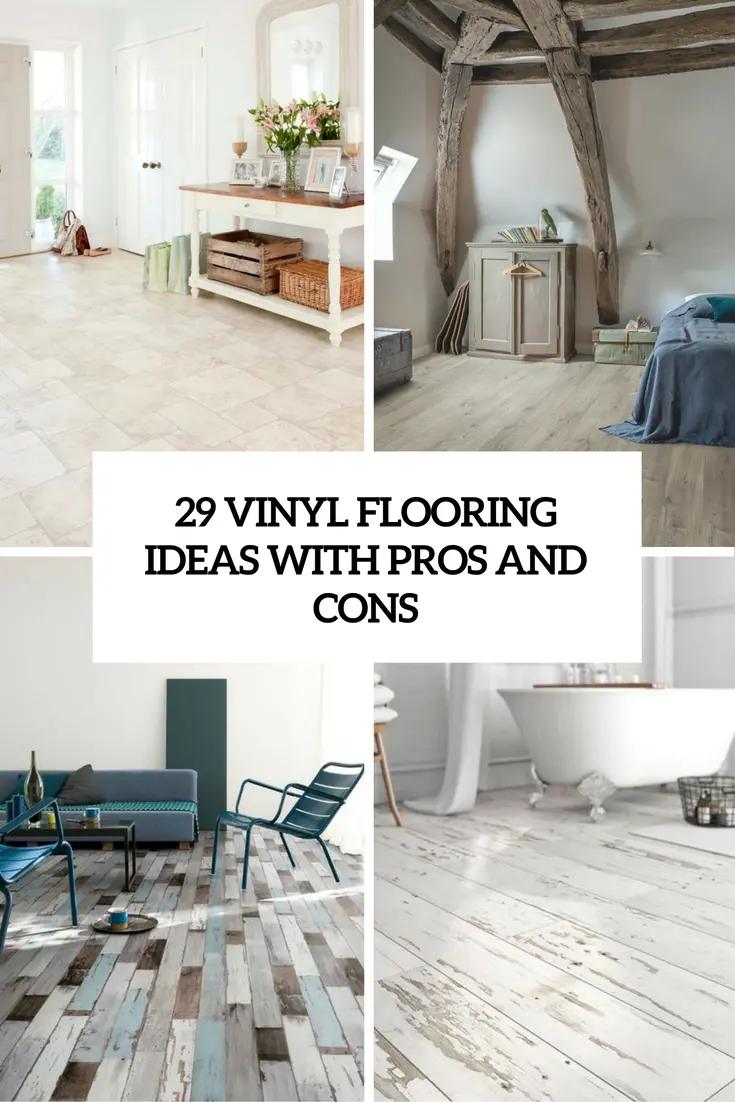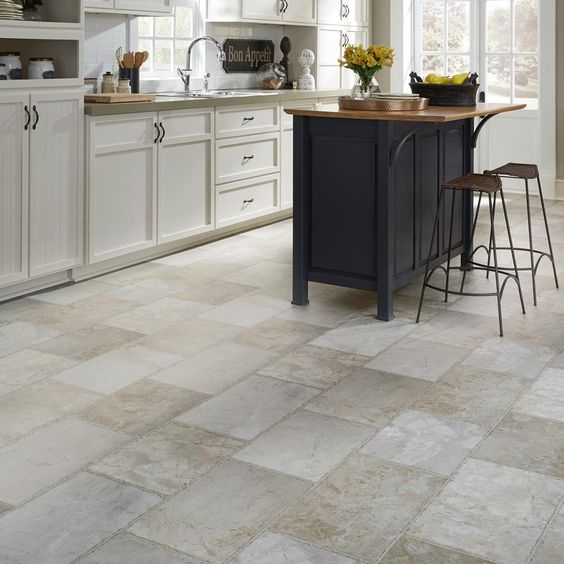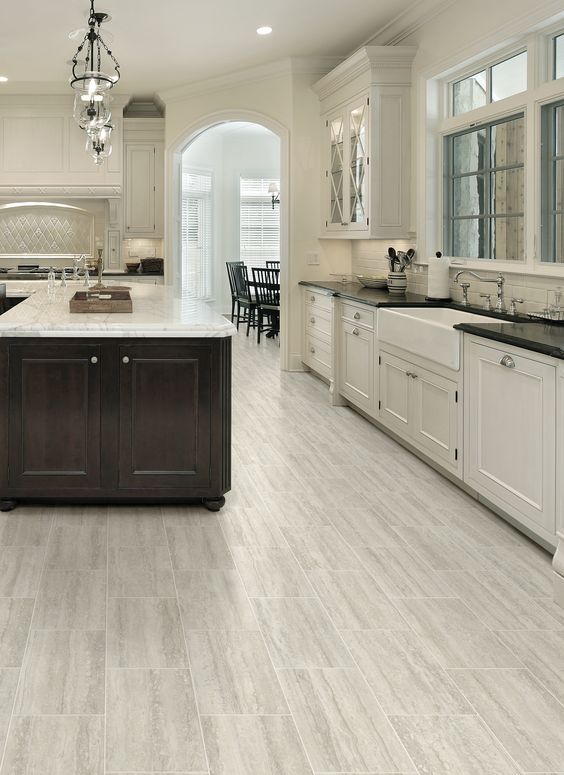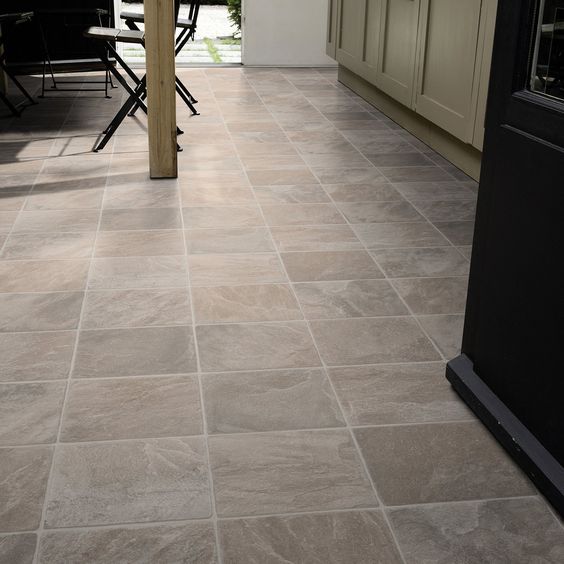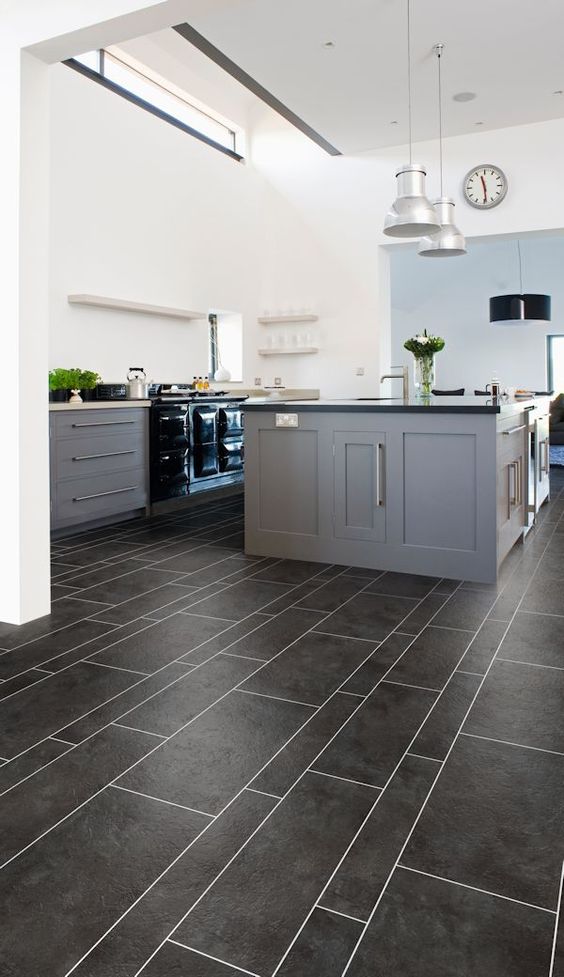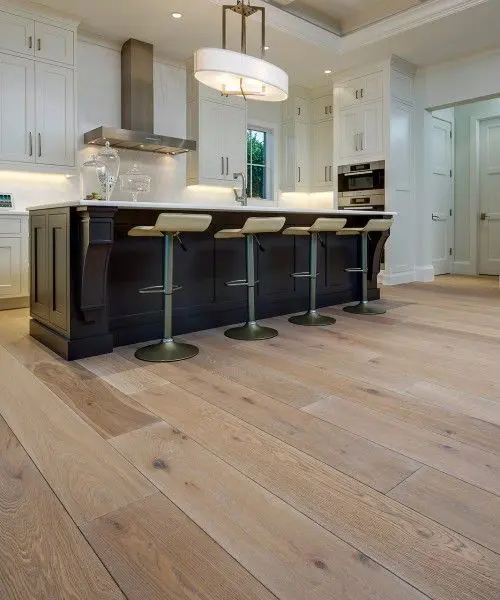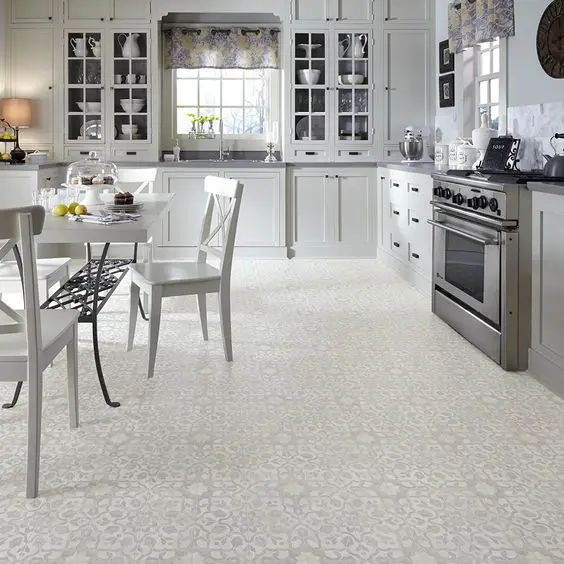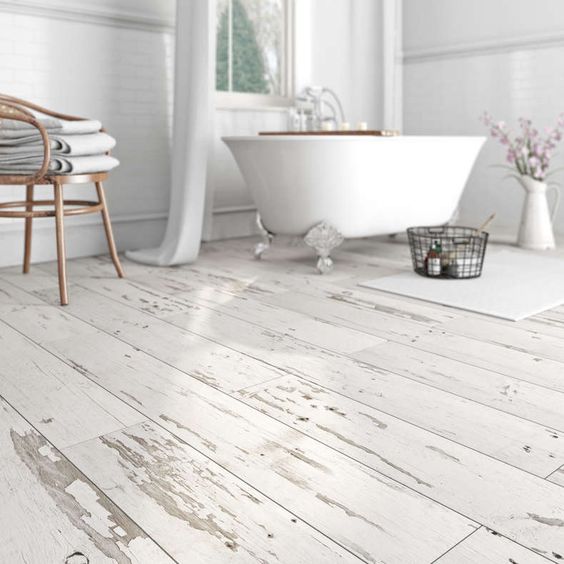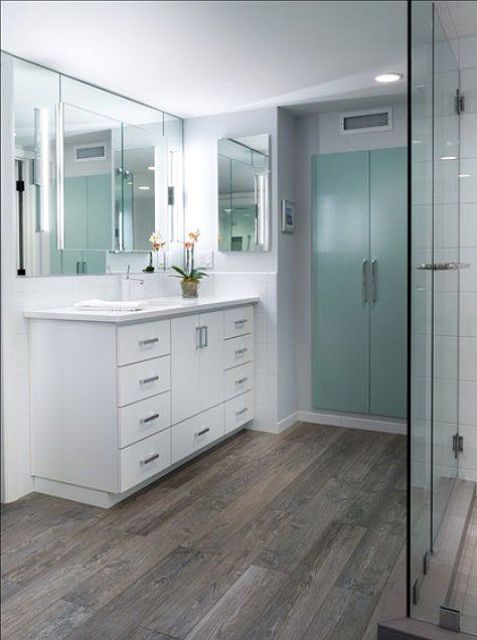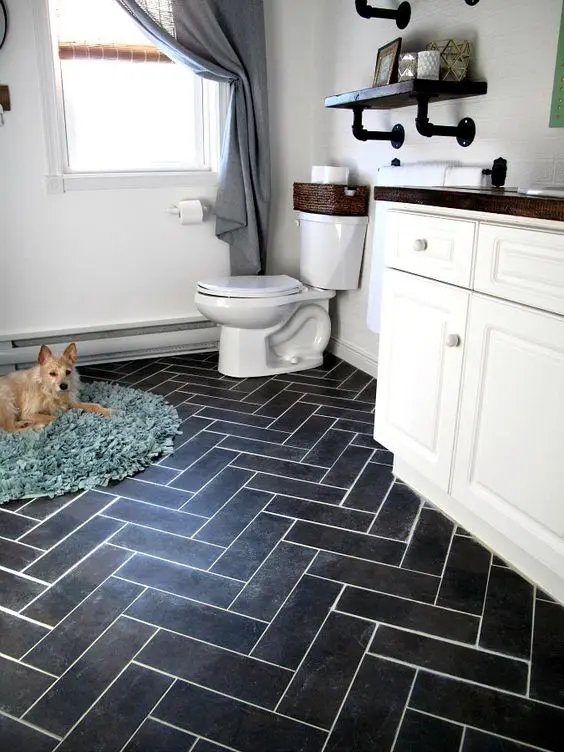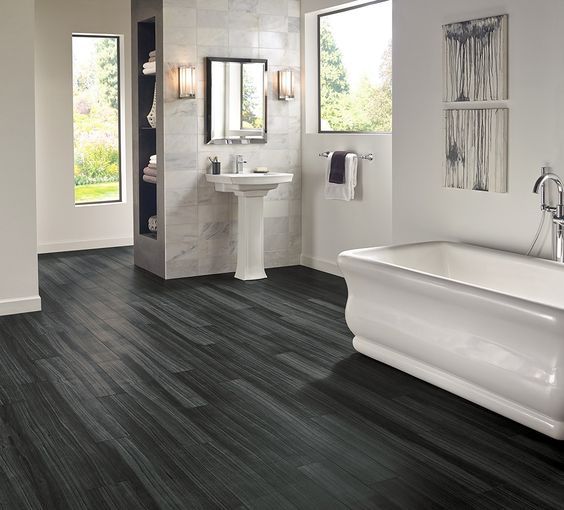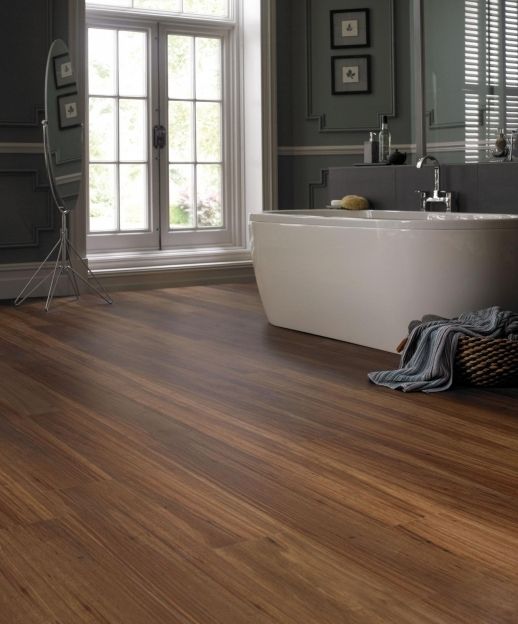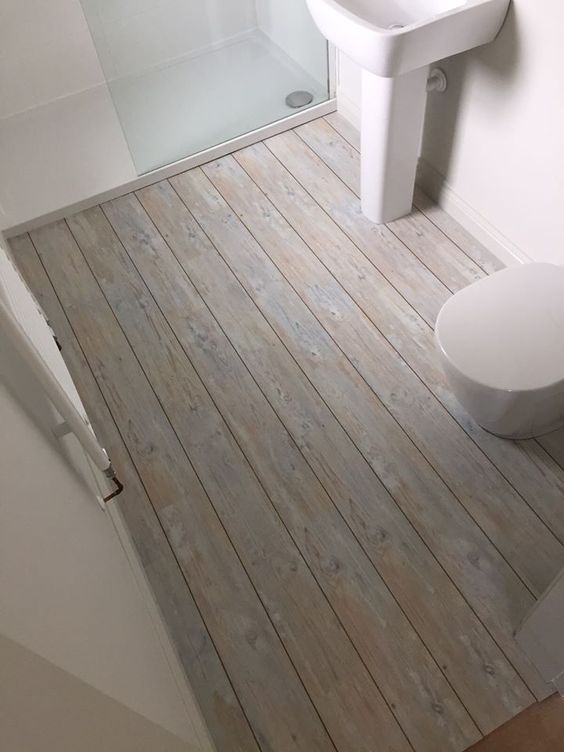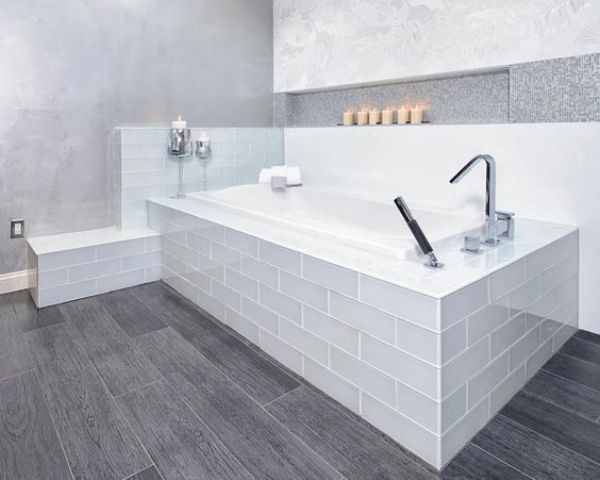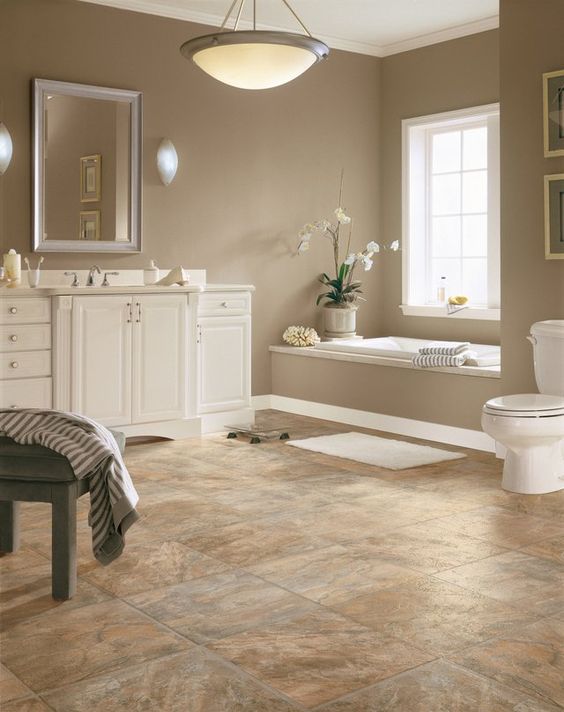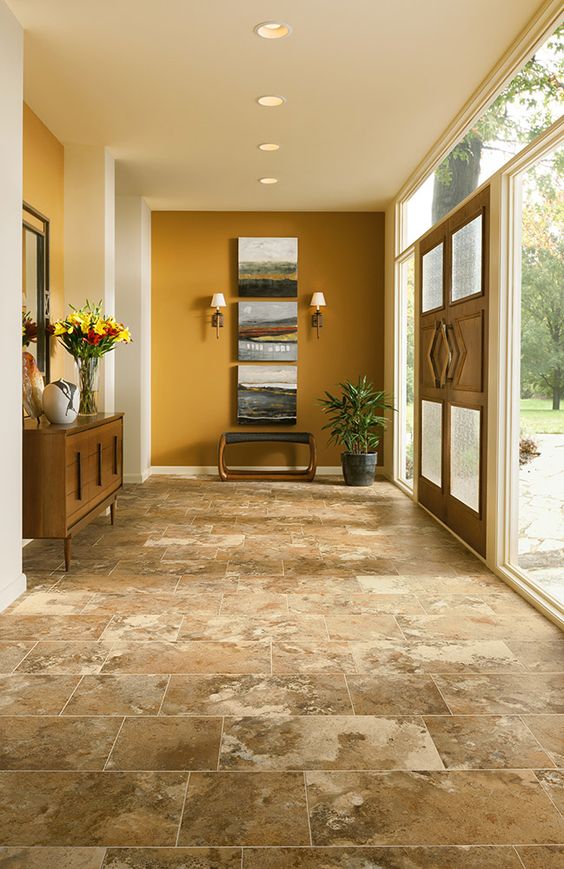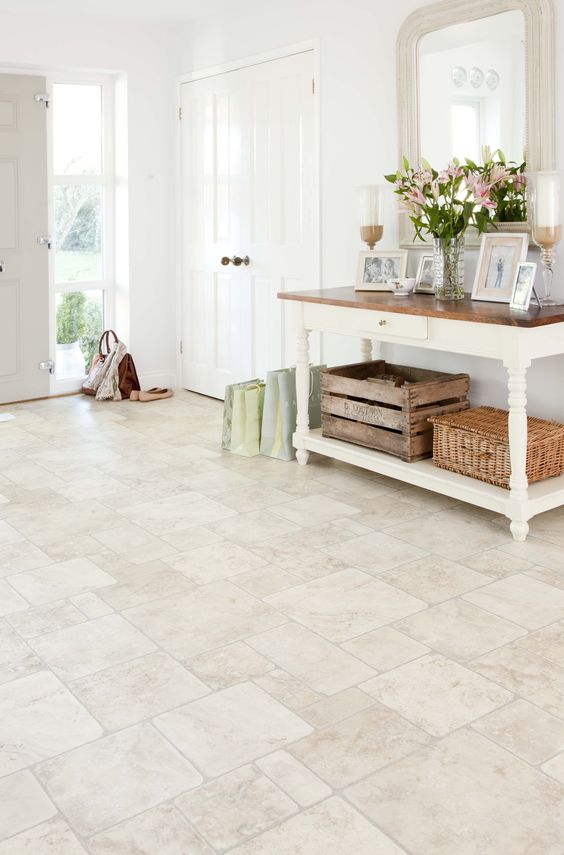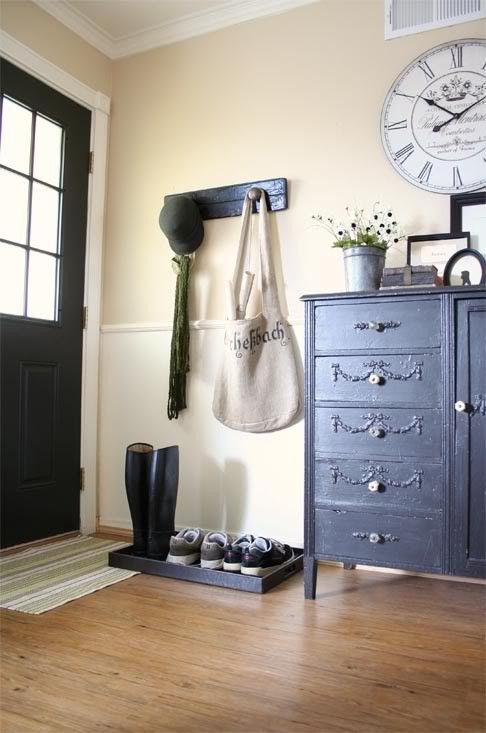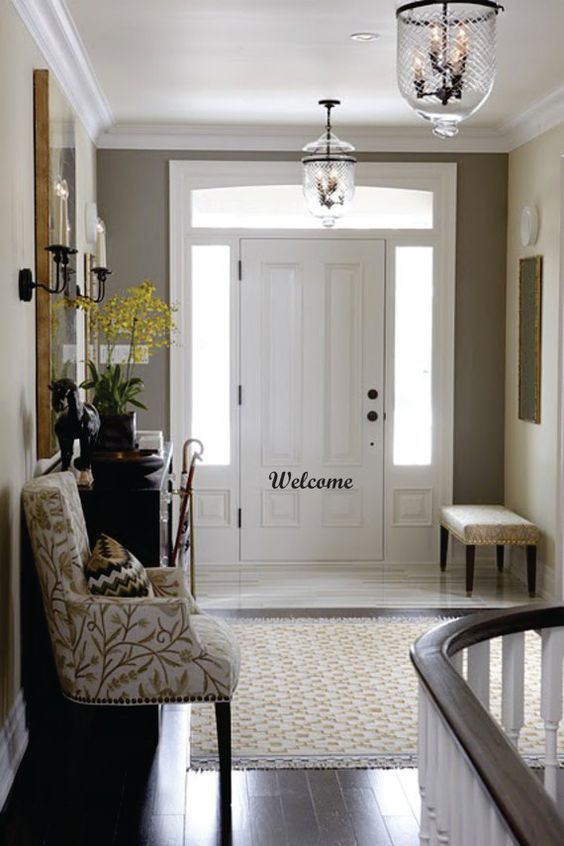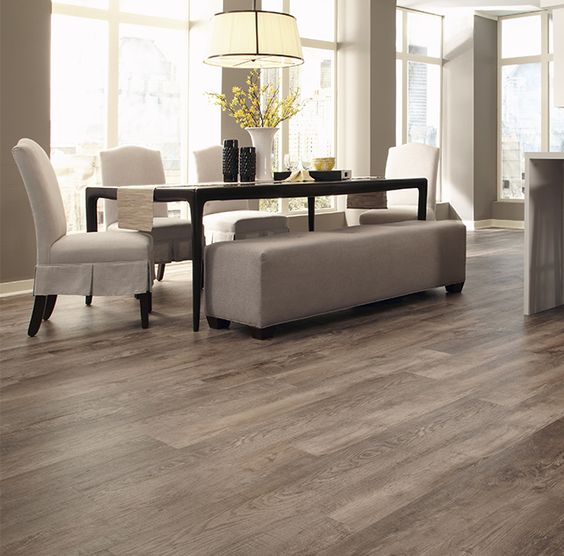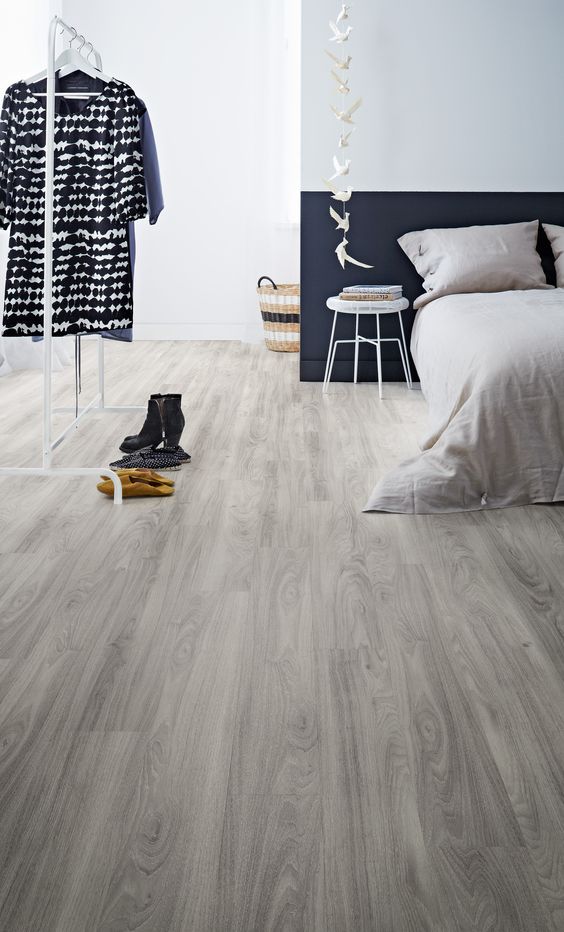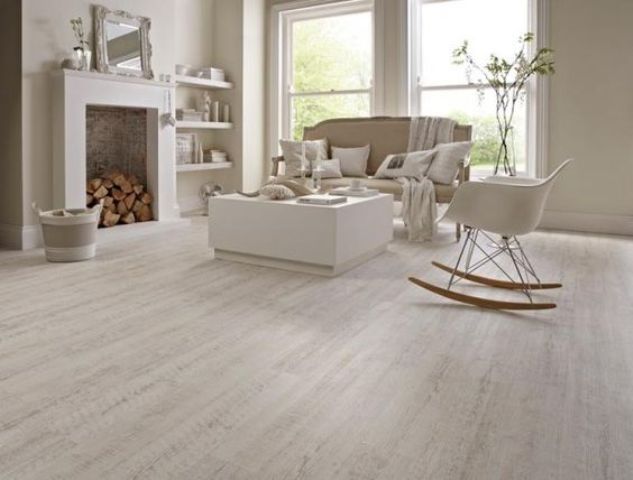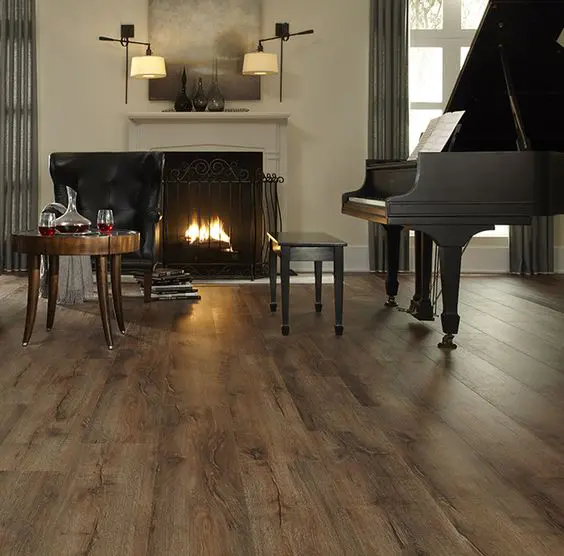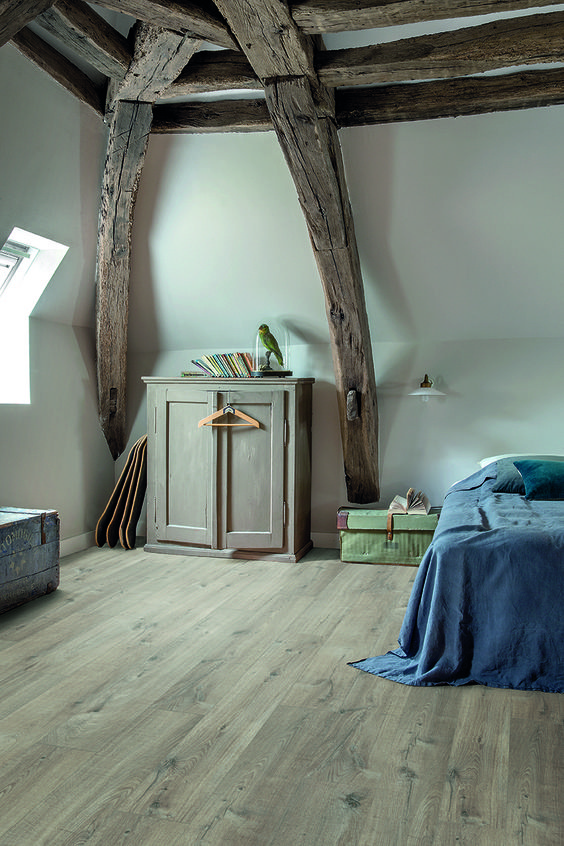Vinyl flooring has been a popular flooring choice for many years due to being inexpensive. Vinyl or synthetic tiles or sheets are a cost-effective solution for homeowners on a tight budget. Available in a wide range of colors, designs and styles, vinyl tiles are easy to cut and install by the average do-it-yourselfer, especially when the tiles feature self-adhesive backing.
Vinyl Floors For Kitchens
Vinyl flooring provides a slightly softer surface than options like tile or wood, because the product is backed with a thin layer of either felt or foam—depending on the manufacturer. The soft layer results in the floor having a little more flexibility and give, which makes it easier to stand on for long periods of time, and it’s essential if you spend a lot of time in the kitchen cooking, cleaning and washing.
It is extremely durable, it can last over 20 years and is very resistant to dirt and water. As far as cleaning and maintenance goes, vinyl is hard to beat. Requiring practically no maintenance after installation, vinyl needs to just be swept and mopped occasionally to keep the floor clean. These properties make it perfect for any functional area of your home including kitchen. But be aware that the spongy quality of vinyl flooring may prevent a glass from breaking if it’s dropped on the floor, but a sharp object can gouge the surface if dropped.

Vinyl tiles are extremely durable and water and dirt resistant, so they are perfect choice for kitchen flooring.
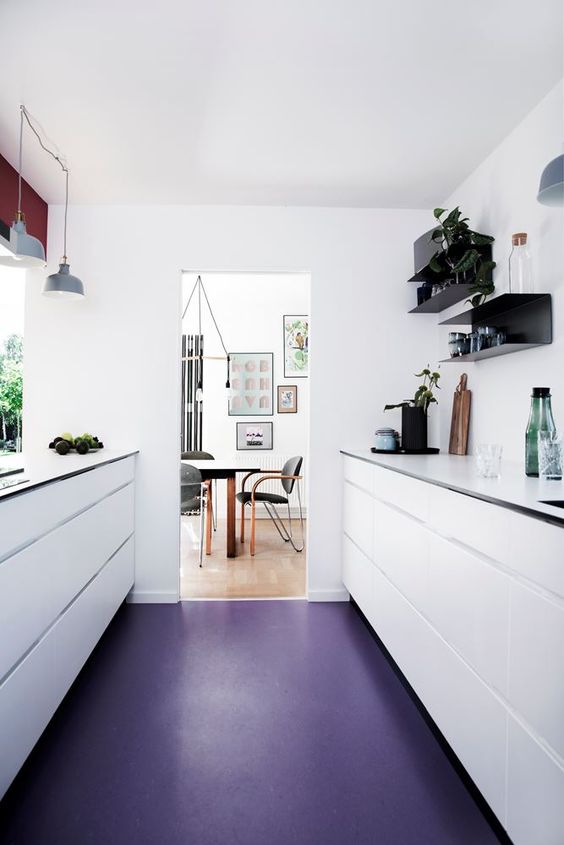
bold purple vinyl flooring for a modern kitchen.
Vinyl Floors For Bathrooms
As I said before, vinyl flooring is totally waterproof, it works particularly well in bathrooms and kitchens, where water often ends up on the floor. Water simply beads on the surface, making it easy to mop up. Plus, regular sweeping and an occasional damp mopping are all that’s required to keep a vinyl floor clean and bright. Don’t hesitate to use it in bathrooms, you’ll get a durable and resistant surface to walk on and you won’t be afraid to spoil it. But keep in mind that over time some vinyl floors develop bumps or curls at the edges or along the seams.
Vinyl Floors For Entryways
Most vinyl flooring has a “wear layer” on top of the vinyl itself, so it’s resistant to normal traffic wear. Resilient tile is sometimes the only solution for a floor with excessive movement or cracks, any other tile would break. That’s what makes vinyl a great solution for any mudroom or entryway.
As for the cons of vinyl floors in the hallways, while the wear layer is designed to protect the flooring, after a few years of traffic the surface will start to show scuffing and signs of wear. Unlike wood, the vinyl floor can’t have a new finish applied. A vinyl tile or plank can be removed and a new one installed, but a sheet vinyl floor needs to be replaced.
Vinyl Floors For Other Spaces
You can also use vinyl in living rooms and bedrooms even as it’s affordable and has a wide range of colors to choose from but here are some disadvantages of such a decision.
One of the biggest problems facing vinyl is the product is manufactured using polyvinyl chloride and will emit volatile organic compounds, especially when it is new. While vinyl tiles are very easy to install on one’s own, getting the subfloor ready for installation can prove to be a difficult job. Furniture pads needs to be installed on the feet of all furniture—or moving the couch could result in scratching or gouging the tile or popping the tile off the floor entirely.
Vinyl can’t stand up to ultra violet rays so under prolonged exposure to sunlight the patterns and colors in a vinyl floor will start to fade. So we recommend leave vinyl floors for kitchens, dining area and bathrooms but of course it’s up to you to decide!
